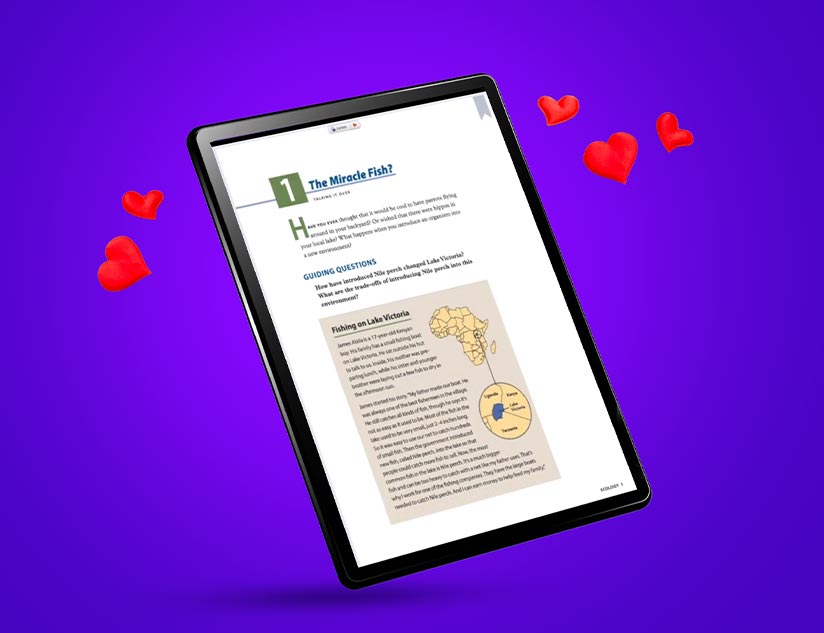2020 moved digital learning from the periphery of education to the forefront, bringing a broad-based acceptance of EdTech tools. However, the pandemic did highlight the need for an effective digital curriculum as well. In the wake of the pandemic, the school closures impacted nearly 60% of students around the world. As a result, almost every school district had to implement remote learning and a fully digital curriculum rapidly.
Before the COVID-19 outbreak, the digital curriculum continued to support as a supplemental educational tool in programs such as credit recovery and independent study. Then, however, it came into mainstream education to deliver online instruction for remote learning.
With the increased adoption of digital curriculam and educational technologies, several benefits came to light for both students and educators. Despite the rushed implementation, districts unlocked vital advantages that may have long-lasting benefits.
Why a Digital Curriculum Still Fits
Multiple K-12 districts have realized that the advantages of adopting a digital curriculum can continue even beyond the pandemic. Here are four such key advantages:
1. Offers a More Personalized Learning Experience
One of the most significant benefits of digital learning is that it allows students greater flexibility to learn. It suits every type of learner, whether visual, auditory, or kinesthetic. They can learn at their own pace and style. In addition, they can figure out learning paths that better align with their preferred learning habits, interests, strengths, and other cultural factors.
Before EdTech tools, teachers often found it challenging to create customized learning programs for every student in their class. However, with access to digital learning platforms, they can easily tailor learning to each student’s specific needs and learning paths. A digital approach also helps with easy-to-administer formative assessments that allow students immediate feedback on learning progress to focus on particular areas to improve outcomes.
Educators can effortlessly create different types of assessments, including adaptive, formative, summative, standards-based, and even video assessments, to obtain timely insights and guide students appropriately. In addition, it helps with incorporating the benefits of one-on-one tutoring into group lessons and opens new opportunities for collaboration and project-based learning.
2. Prepares Students for the New Digital World
As per an estimate, more than 80% of middle-skill jobs will require a digital skillset in the future, highlighting the importance of digital literacy as an ongoing part of student learning.
Students will be required to be proficient in using technology and digital tools before they enter the workforce. An effective digital curriculum will help ensure just that.
3. Offers Cost Savings and Better Accessibility
Textbooks, for instance, are often expensive, heavy, and difficult to update and replace. eBooks can efficiently address some of these concerns associated with traditional publishing. In addition, learning with eBooks offers long-term savings for schools and families, making learning more inclusive.
If you find the costs of developing a digital learning platform steep, you can rent or license a robust platform. These EdTech solutions offer significant cost savings throughout their lifecycle. In addition, districts can provide students with lightweight, agile devices in classrooms or at home. Advanced learning platforms for content delivery offer online and offline education access allowing students to download learning materials and view them at their convenience, even if there is no internet connectivity.
4. Helps Close Achievement Gaps
Students and even educators are sometimes unaware of the achievement gaps. If appropriately implemented, EdTech tools offer opportunities for tracking student performance and supporting at-risk students with improvement measures. With the help of learning analytics, teachers can follow student engagement levels, deliver customized lessons, and revise teaching methods for closing achievement gaps.
While districts are still considering whether or not to reopen schools, they cannot deny the fact that a digital curriculum can cater to the learning needs of every type of student. There is also abundant evidence that learning online can be more effective. For instance, research indicates that students retain 25%-60% more material when learning online than only 8%-10% in a physical classroom. In addition, Digital learning allows students to learn at their own pace, go back and re-read, skip, or accelerate through concepts as they choose.
So, even if the schools open up completely post-pandemic, the advantages of a digital curriculum are far too many to ignore. A blended approach to education could be the way forward to ensure optimal educational outcomes.
MagicBox is a go-to learning platform that not only enables the creation and distribution of rich, interactive eBooks and assessments but teachers, administrators, students, and parents get their dashboards, using custom analytics for informed learning decisions.
Contact us today to know more about the benefits of this end-to-end content creation, publishing, and distribution platform that enables engaged and outcome-driven learning experiences.













